Dublin cruise port guide
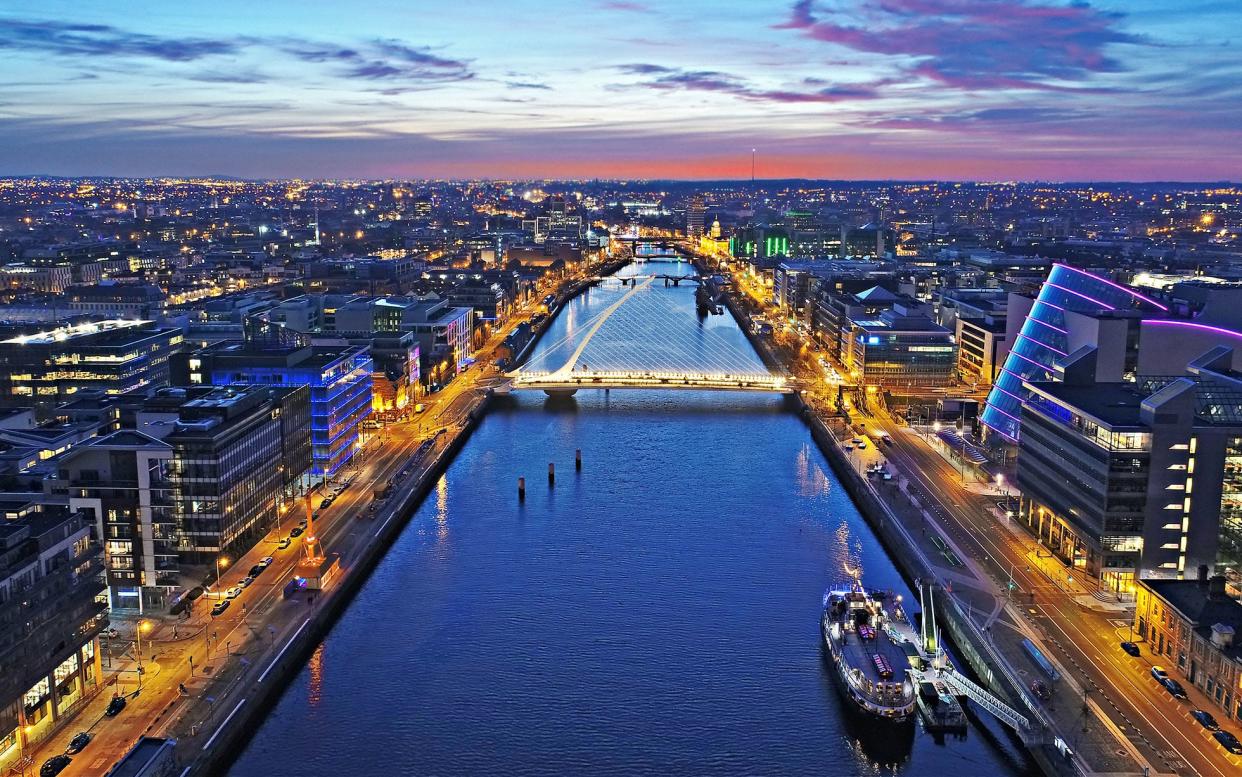
Why go?
From James Joyce to Oscar Wilde, U2 to Sinead O’Connor and Guinness to Sudocrem, Dublin has some heavyweight historical, cultural and business ties. Despite its modest size, the city boasts some of the country’s best museums, bars, restaurants and parks making it a must-visit on any cruise itinerary.
Cruise port location
Dublin port is Ireland’s busiest with over 150 cruise ships visiting the city in 2018. There are three quays where cruise vessels dock near the mouth of the River Liffey to the east of the centre. A 10-minute taxi ride or shuttle bus can whisk you into town.
Smaller ships and tenders may dock in Dun Laoghaire which is a suburb of Dublin, 12km south of the city. It is a 20-minute taxi ride to Dublin’s centre or else you can hop on the electric rail system known as the Dublin Rapid Transit System (DART) for the 20-minute ride into town. Buses also connect the harbour to the city.
Can I walk to any places of interest?
From the North Wall Quay Extension it is a 30-minute walk along the River Liffey, past the Samuel Beckett Bridge and Customs House, into the town centre. Walking is not recommended from the other quays due to heavy traffic.
Getting around
Cheap and easy-to-navigate buses criss-cross the city whilst the Luas tram system has two lines traversing the town. Bikes are also for hire with docks scattered around Dublin.
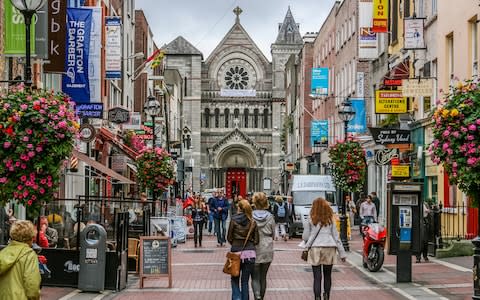
For those tight on time, it’s worth buying a ticket for the Dublin Sightseeing Hop-On-Hop-Off bus so you can get your bearings before deciding which of the attractions you’d like to explore.
Getting there
Dublin Airport is served by a number of international airlines and is a 40-minute bus or taxi journey to the city centre where you can then make your way to the port. Alternatively, Irish Ferries and Stena Line have daily connections to Holyhead in Wales. Dublin is also a railway hub with Irish Rail operating trains to Belfast, Cork, Galway and Limerick from Connolly and Heuston stations.
Hotels
One of Dublin’s most luxurious hotels, The Merrion exudes elegance and sophistication. Enjoy dining at the country’s only two Michelin-starred restaurant and, afterwards, browse the largest private collection of 19th and 20th century art in Ireland.

For families, The Fitzwilliam Hotel is a good choice with interconnecting rooms, accessory packs for younger visitors and children’s menus.
For the more budget-conscious traveller, Anchor House Bed & Breakfast dates from the 18th century and offers a friendly spot to relax in the centre of town. If you’ve always harboured a desire to stay in a castle, then just a 10 minute drive from Dublin city centre is the ivy-clad Clontarf Castle Hotel with a suitably baronial lobby and impressive artwork collection.
What to see and do
What can I do in four hours or less?
Visit the birthplace of Dublin’s most iconic brand at the Guinness Storehouse and learn how the black stuff is made before sipping a pint at the top floor bar with panoramic views of the city. Then take a 15-minute walk, or 5-minute car journey, to the spectacular St Patrick’s Cathedral where, among others, Jonathan Swift, the author of Gulliver’s Travels, is buried. The charming March’s Library is located next to the cathedral and houses over 20,000 rare books and stages fascinating exhibitions.
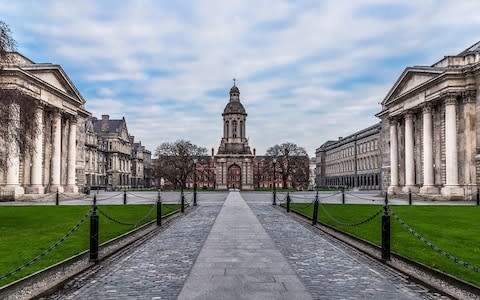
Alternatively, head to the beautiful Old Library in the grounds of Trinity College and admire the Book of Kells; an ancient illuminated manuscript that dates from 800 AD. Families will love the interactive Science Gallery, also part of Trinity College.
What can I do in eight hours or less?
A visit to the atmospheric Kilmainham Gaol allows visitors to understand the pivotal role the prison has played in Irish history when it housed rebel leaders and Irish Republicans, whilst a trip to the Irish Emigration Museum (EPIC) offers a digital exploration of the country’s history and celebrates the Irish diaspora. Finish your historical wanderings at the delightful Little Museum of Dublin which is full to bursting with cultural effects including signed U2 albums, vintage posters and a first edition copy of Ulysses.
If the weather’s good then stretch your legs in one of Dublin’s many green spaces. Phoenix Park is just 2km west of the city centre and houses Dublin Zoo, the President of Ireland’s official residence and a herd of fallow deer.
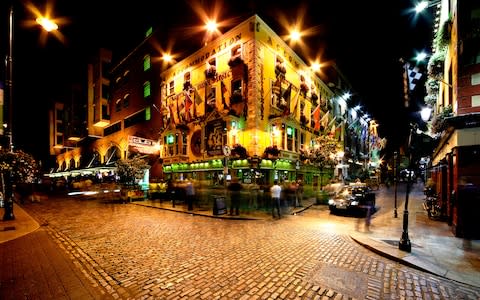
What can I do with a bit longer?
Why not hop on the DART transportation system for a scenic trip down the Irish Sea coast and visit some of the lovely villages dotted along the route such Howth, Dalkey, Killiney, Bray and Greystones.
You can also visit the beautiful Powerscourt Gardens to the south of Dublin, or head north to the magnificent Malahide Castle, parts of which date back to the 12th century.
Eat and drink
With its literary connotations – James Joyce mentions the dish several times in his works – Coddle (sometimes known as Dublin Coddle) is a city favourite. With no hard and fast recipe (the dish is made up of leftovers including sausages, bacon, onions and potatoes), you can sample it at the wonderfully named Hairy Lemon on Stephen Street.
Another popular Dublin delicacy famously mentioned in the song ‘Molly Malone’, are cockles and mussels; try them at The Woollen Mills restaurant close to Ha-Penny Bridge.
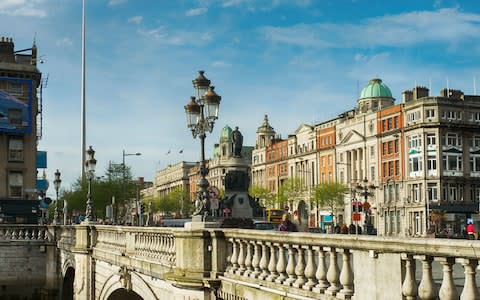
Of course, to truly understand Dublin is to spend time in one of its many pubs, chatting to locals and listening to music. One of the most acclaimed music pubs is O’Donoghue’s where the Irish folk band The Dubliners played many a time. Another legendary watering hole is The Long Hall, with its stunning interiors and great atmosphere, developed over 250 years of serving thirsty townfolk.
Don’t leave Dublin without…
Aside from leprechaun- and Guinness-themed paraphernalia, which can all be snapped up at Carroll’s Irish Gifts, why not ask the experts at the Celtic Whiskey Shop their opinion on which tipple to bring home? And if the wind whipping down the Liffey is putting a chill in your bones, then make sure you wrap up in a gloriously snug Aran Islands sweater.
Need to know
Safety
Expect a trouble-free visit to Dublin if you take the usual precautions.
Best time to go
Dublin’s cruise season runs from April to October. Traditionally, the city’s high season is July and August so visiting between April and June or September and October is perfect for avoiding the crowds.
Closures
Museums and shops are open daily.
Save money
The Dublin Pass comes in various configurations depending on the length of your visit and gives you free, fast track entry to more than 30 attractions.

